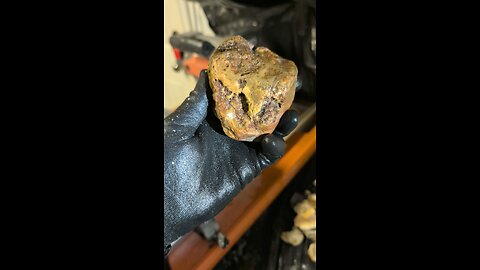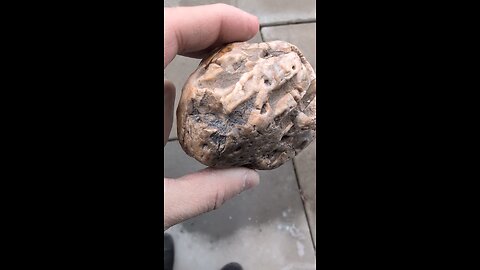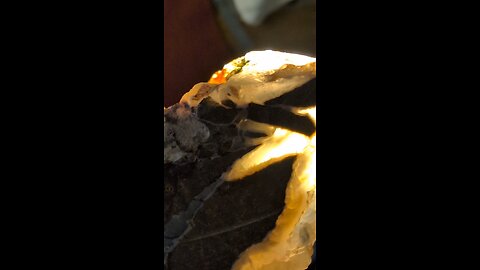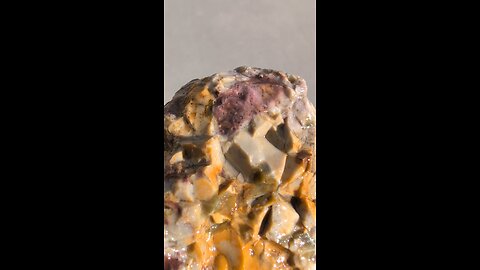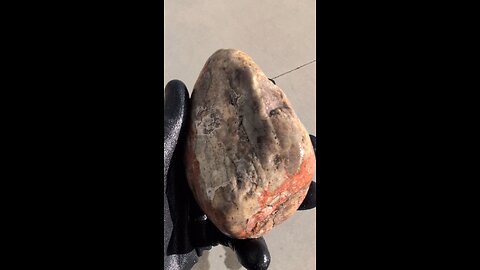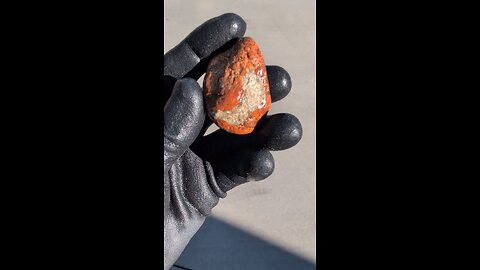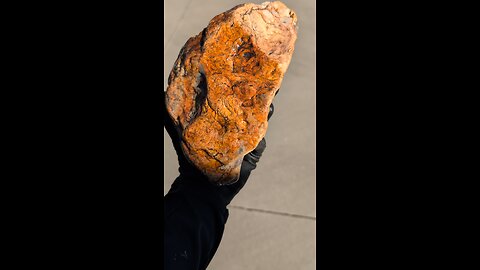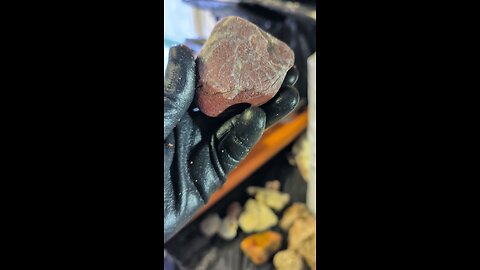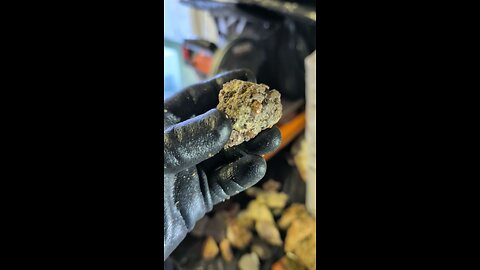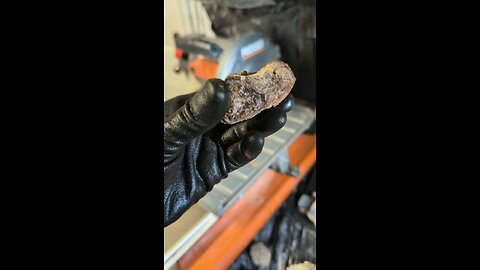
Jasper!
58 videos
Updated 4 days ago
Jasper is an opaque rock of virtually any color stemming from the mineral content of the original sediments or ash. Patterns arise during the consolidation process forming flow and depositional patterns in the original silica-rich sediment or volcanic ash. Hydrothermal circulation is generally thought to be required in the formation of jasper.
Jasper can be modified by the diffusion of minerals along discontinuities providing the appearance of vegetative growth, i.e., dendritic. The original materials are often fractured and/or distorted, after deposition, into diverse patterns, which are later filled in with other colorful minerals. Weathering, with time, will create intensely colored superficial rinds.
The classification and naming of jasper varieties presents a challenge.Terms attributed to various well-defined materials includes the geographic locality where it is found, sometimes quite restricted such as "Bruneau" (a canyon) and "Lahontan" (a lake), rivers and even individual mountains; many are fanciful, such as "forest fire" or "rainbow", while others are descriptive, such as "autumn" or "porcelain". A few are designated by the place of origin such as a brown Egyptian or red African.
Banded iron formations
Jasper is the main component in the silica-rich parts of banded iron formations (BIFs) which indicate low, but present, amounts of dissolved oxygen in the water such as during the Great Oxidation Event or snowball earths.The red bands are microcrystalline red chert, also called jasper.
Picture jaspers exhibit combinations of patterns resulting in what appear to be scenes or images, when seen on a cut section. Such patterns include banding from flow or depositional patterns (from water or wind), as well as dendritic or color variations. Diffusion from a center produces a distinctive orbicular appearance, i.e., leopard skin jasper or linear banding from a fracture as seen in liesegang jasper. Healed, fragmented rock produces brecciated (broken) jasper.
While these "picture jaspers" can be found all over the world, specific colors or patterns are unique to the geographic region from which they originate. One source of the stone is Indonesia, especially in Purbalingga district. From the US, Oregon's Biggs jasper and Idaho's Bruneau jasper from the Bruneau River canyon are particularly fine examples. Other examples can be seen at Ynys Llanddwyn in Wales.[17] A blue-green jasper occurs in a deposit at Ettutkan Mountain, Staryi Sibay, Bashkortostan, Russia. (The town of Sibay, in the far south of the Ural Mountains, near the border with Kazakhstan, is noted for its colossal, open-cast copper mine.)
-https://en.wikipedia.org/wiki/Jasper
-
Brecciated Jasper w/Chalcedony!
 RyanzRocksBased on the image provided, the rock appears to be a type of jasper, specifically a brecciated jasper. Jasper is known for its rich, earthy colors and often contains patterns or inclusions. Brecciated jasper is characterized by its fragmented appearance, where pieces of jasper are cemented together with silica or other minerals, creating a mosaic-like pattern. This specimen shows a mix of red, brown, and some lighter inclusions, which is typical of jasper. Jasper is an opaque variety of chalcedony and is commonly found in various colors due to impurities like iron.50 views 1 comment
RyanzRocksBased on the image provided, the rock appears to be a type of jasper, specifically a brecciated jasper. Jasper is known for its rich, earthy colors and often contains patterns or inclusions. Brecciated jasper is characterized by its fragmented appearance, where pieces of jasper are cemented together with silica or other minerals, creating a mosaic-like pattern. This specimen shows a mix of red, brown, and some lighter inclusions, which is typical of jasper. Jasper is an opaque variety of chalcedony and is commonly found in various colors due to impurities like iron.50 views 1 comment -
Jumpin' Jasper!
 RyanzRocksBased on the image, the rock appears to be a type of jasper. Here are some reasons why: Coloration: Jasper often displays a variety of colors, including reds, yellows, browns, and greens, which match the hues seen in your rock. The presence of these colors suggests the inclusion of iron oxides or other minerals. Texture and Pattern: Jasper typically has a smooth, somewhat waxy luster when polished and can show banding or mottled patterns, which is evident in your specimen. The patterns in your rock look somewhat like flow patterns or layers, which is common in jasper due to its formation process. Composition: Jasper is an opaque, impure variety of silica, usually containing significant amounts of iron, which contributes to its color. The rock in the image has the appearance of being dense and fine-grained, typical of jasper. Jasper is often used in jewelry, carvings, and as a decorative stone due to its hardness and attractive patterns.35 views
RyanzRocksBased on the image, the rock appears to be a type of jasper. Here are some reasons why: Coloration: Jasper often displays a variety of colors, including reds, yellows, browns, and greens, which match the hues seen in your rock. The presence of these colors suggests the inclusion of iron oxides or other minerals. Texture and Pattern: Jasper typically has a smooth, somewhat waxy luster when polished and can show banding or mottled patterns, which is evident in your specimen. The patterns in your rock look somewhat like flow patterns or layers, which is common in jasper due to its formation process. Composition: Jasper is an opaque, impure variety of silica, usually containing significant amounts of iron, which contributes to its color. The rock in the image has the appearance of being dense and fine-grained, typical of jasper. Jasper is often used in jewelry, carvings, and as a decorative stone due to its hardness and attractive patterns.35 views -
Brecciated Jasper!
 RyanzRocksThe rock in the image appears to be Jasper, specifically a variety that's often called "Picture Jasper" or "Landscape Jasper" due to its interesting patterns. Here's why: * Appearance: The rock exhibits a wide range of earthy tones – yellows, browns, grays, and whites – swirled and banded together. This is characteristic of jasper. * Opacity: Jasper is typically an opaque rock, and the image shows that light doesn't transmit through it. * Texture: While we can't feel the texture from the image, jasper is usually fine-grained and smooth. * Patterns: The distinctive dendritic (branching) patterns and flow-like swirls are common in Picture Jasper. These patterns are often formed by mineral inclusions, such as iron oxides, during the rock's formation. Picture Jasper is a type of chalcedony (a microcrystalline quartz) that is known for its unique and often beautiful patterns. It's a popular material for cabochons, carvings, and jewelry. It's important to note: Identification based on an image alone isn't always definitive. A closer examination in person, including hardness tests and potentially looking at a fresh broken surface, would provide more certainty. However, Jasper, particularly Picture Jasper, is a very likely and accurate identification based on the visual evidence.41 views
RyanzRocksThe rock in the image appears to be Jasper, specifically a variety that's often called "Picture Jasper" or "Landscape Jasper" due to its interesting patterns. Here's why: * Appearance: The rock exhibits a wide range of earthy tones – yellows, browns, grays, and whites – swirled and banded together. This is characteristic of jasper. * Opacity: Jasper is typically an opaque rock, and the image shows that light doesn't transmit through it. * Texture: While we can't feel the texture from the image, jasper is usually fine-grained and smooth. * Patterns: The distinctive dendritic (branching) patterns and flow-like swirls are common in Picture Jasper. These patterns are often formed by mineral inclusions, such as iron oxides, during the rock's formation. Picture Jasper is a type of chalcedony (a microcrystalline quartz) that is known for its unique and often beautiful patterns. It's a popular material for cabochons, carvings, and jewelry. It's important to note: Identification based on an image alone isn't always definitive. A closer examination in person, including hardness tests and potentially looking at a fresh broken surface, would provide more certainty. However, Jasper, particularly Picture Jasper, is a very likely and accurate identification based on the visual evidence.41 views -
Botryoidal Chalcedony n' Jasper Glow!
 RyanzRocksBrecciated Jasper with chalcedony is a fascinating combination in the world of gemstones and minerals, offering both visual complexity and a unique geological story. Here's an overview: Brecciated Jasper: Formation: Brecciated Jasper forms when fragments of jasper (which is a form of microcrystalline quartz) are cemented together by a later mineral deposit. This process often involves the fracturing of existing jasper through geological activities like faulting or weathering, followed by the filling of these fractures with siliceous material, often chalcedony or quartz. Appearance: The result is a rock with a mosaic-like appearance, where different colored jasper fragments are held together by the matrix. The colors can vary widely, but reds, browns, yellows, and greens are common, with the matrix often being a lighter or contrasting color. Properties: Brecciated Jasper is known for its grounding and protective qualities in metaphysical circles. It's believed to stabilize energy and bring about feelings of wholeness and strength. Chalcedony: Nature: Chalcedony is a cryptocrystalline form of silica, consisting of very fine intergrowths of quartz and moganite. It can appear in a range of colors, from translucent white to various hues, depending on impurities. In Brecciated Jasper: When chalcedony acts as the cement in Brecciated Jasper, it contributes to the stone's overall appearance by providing a contrasting matrix. This chalcedony can be translucent to semi-translucent, adding a different texture and sometimes color to the piece. Visual Effect: The combination creates a striking visual contrast, where the angular or jagged pieces of jasper are highlighted against the smoother, often lighter chalcedony matrix. This can result in patterns that look like broken glass or stained glass windows. Combined Properties: Aesthetic: This combination is particularly sought after for its unique, mosaic-like beauty. It's used in jewelry, decorative items, and lapidary arts where the natural patterning can be showcased. Geological Interest: From a geological perspective, this stone tells a story of disruption and healing in the Earth's crust, where old rock is broken and then naturally mended with new material. Healing and Metaphysical Uses: The addition of chalcedony might enhance the stone's reputed healing properties, like promoting emotional balance, nurturing, and communication, complementing the stabilizing effects of jasper. Availability and Use: You can find this type of jasper in various forms, from polished cabochons for jewelry to raw or tumbled stones for collectors or metaphysical use. It's sourced from places like Brazil, India, and the United States, among other locations. When buying or working with Brecciated Jasper with chalcedony, look for pieces where the contrast between the jasper fragments and the chalcedony matrix is most pronounced for maximum visual impact. Remember, like all natural stones, each piece can be quite unique due to the natural processes involved in its formation.56 views
RyanzRocksBrecciated Jasper with chalcedony is a fascinating combination in the world of gemstones and minerals, offering both visual complexity and a unique geological story. Here's an overview: Brecciated Jasper: Formation: Brecciated Jasper forms when fragments of jasper (which is a form of microcrystalline quartz) are cemented together by a later mineral deposit. This process often involves the fracturing of existing jasper through geological activities like faulting or weathering, followed by the filling of these fractures with siliceous material, often chalcedony or quartz. Appearance: The result is a rock with a mosaic-like appearance, where different colored jasper fragments are held together by the matrix. The colors can vary widely, but reds, browns, yellows, and greens are common, with the matrix often being a lighter or contrasting color. Properties: Brecciated Jasper is known for its grounding and protective qualities in metaphysical circles. It's believed to stabilize energy and bring about feelings of wholeness and strength. Chalcedony: Nature: Chalcedony is a cryptocrystalline form of silica, consisting of very fine intergrowths of quartz and moganite. It can appear in a range of colors, from translucent white to various hues, depending on impurities. In Brecciated Jasper: When chalcedony acts as the cement in Brecciated Jasper, it contributes to the stone's overall appearance by providing a contrasting matrix. This chalcedony can be translucent to semi-translucent, adding a different texture and sometimes color to the piece. Visual Effect: The combination creates a striking visual contrast, where the angular or jagged pieces of jasper are highlighted against the smoother, often lighter chalcedony matrix. This can result in patterns that look like broken glass or stained glass windows. Combined Properties: Aesthetic: This combination is particularly sought after for its unique, mosaic-like beauty. It's used in jewelry, decorative items, and lapidary arts where the natural patterning can be showcased. Geological Interest: From a geological perspective, this stone tells a story of disruption and healing in the Earth's crust, where old rock is broken and then naturally mended with new material. Healing and Metaphysical Uses: The addition of chalcedony might enhance the stone's reputed healing properties, like promoting emotional balance, nurturing, and communication, complementing the stabilizing effects of jasper. Availability and Use: You can find this type of jasper in various forms, from polished cabochons for jewelry to raw or tumbled stones for collectors or metaphysical use. It's sourced from places like Brazil, India, and the United States, among other locations. When buying or working with Brecciated Jasper with chalcedony, look for pieces where the contrast between the jasper fragments and the chalcedony matrix is most pronounced for maximum visual impact. Remember, like all natural stones, each piece can be quite unique due to the natural processes involved in its formation.56 views -
Brecciated Jasper!
 RyanzRocksBrecciated Jasper is a form of jasper, which is a variety of chalcedony, a microcrystalline quartz. Here's what characterizes brecciated jasper: Appearance: Brecciated jasper has a distinctive look due to its formation process. It consists of angular, sharp-edged fragments (breccia) of jasper cemented together by another mineral, often more jasper or quartz. This creates a mosaic-like pattern where you can see different colors and textures pieced together, giving it a unique, broken or fragmented appearance. Color: The colors can vary widely but are commonly red, brown, yellow, and sometimes green or black. The matrix or cementing material might contrast with the fragments, enhancing the visual appeal. Formation: Brecciation occurs when rocks are broken into fragments by geological processes like faulting, weathering, or other forms of tectonic activity. These fragments are then cemented back together over time by mineral-rich fluids. In the case of brecciated jasper, the fragments are jasper, and they're often cemented by the same or similar mineral composition. Properties: Hardness: Like all jasper, brecciated jasper has a hardness of about 6.5 to 7 on the Mohs scale, making it suitable for various types of jewelry and decorative items. Luster: It typically has a waxy to dull luster when unpolished, but polishing can bring out a more vitreous shine. Uses: Jewelry: Due to its attractive patterns and colors, brecciated jasper is often used in beads, cabochons, and other ornamental pieces. Decorative Stones: It's also used in carvings, decorative stones, and sometimes in architecture for its aesthetic appeal. Metaphysical Properties: In the realm of crystal healing or metaphysical beliefs, brecciated jasper is thought to combine the properties of jasper (grounding, stabilizing) with the energizing effects of hematite if present, promoting physical vitality and emotional stability. Geographical Locations: Brecciated jasper can be found in various parts of the world where jasper is abundant, including but not limited to the United States, particularly in states like Oregon, Idaho, and Arizona, as well as in Brazil and India. When collecting or purchasing brecciated jasper, enthusiasts look for pieces with clear patterns, vibrant colors, and interesting contrasts between the jasper fragments and the matrix. Remember, the exact appearance can vary greatly from one location to another due to differences in the minerals involved and the geological history of the area where it was formed.54 views
RyanzRocksBrecciated Jasper is a form of jasper, which is a variety of chalcedony, a microcrystalline quartz. Here's what characterizes brecciated jasper: Appearance: Brecciated jasper has a distinctive look due to its formation process. It consists of angular, sharp-edged fragments (breccia) of jasper cemented together by another mineral, often more jasper or quartz. This creates a mosaic-like pattern where you can see different colors and textures pieced together, giving it a unique, broken or fragmented appearance. Color: The colors can vary widely but are commonly red, brown, yellow, and sometimes green or black. The matrix or cementing material might contrast with the fragments, enhancing the visual appeal. Formation: Brecciation occurs when rocks are broken into fragments by geological processes like faulting, weathering, or other forms of tectonic activity. These fragments are then cemented back together over time by mineral-rich fluids. In the case of brecciated jasper, the fragments are jasper, and they're often cemented by the same or similar mineral composition. Properties: Hardness: Like all jasper, brecciated jasper has a hardness of about 6.5 to 7 on the Mohs scale, making it suitable for various types of jewelry and decorative items. Luster: It typically has a waxy to dull luster when unpolished, but polishing can bring out a more vitreous shine. Uses: Jewelry: Due to its attractive patterns and colors, brecciated jasper is often used in beads, cabochons, and other ornamental pieces. Decorative Stones: It's also used in carvings, decorative stones, and sometimes in architecture for its aesthetic appeal. Metaphysical Properties: In the realm of crystal healing or metaphysical beliefs, brecciated jasper is thought to combine the properties of jasper (grounding, stabilizing) with the energizing effects of hematite if present, promoting physical vitality and emotional stability. Geographical Locations: Brecciated jasper can be found in various parts of the world where jasper is abundant, including but not limited to the United States, particularly in states like Oregon, Idaho, and Arizona, as well as in Brazil and India. When collecting or purchasing brecciated jasper, enthusiasts look for pieces with clear patterns, vibrant colors, and interesting contrasts between the jasper fragments and the matrix. Remember, the exact appearance can vary greatly from one location to another due to differences in the minerals involved and the geological history of the area where it was formed.54 views -
Jasper!
 RyanzRocksBrecciated Jasper is a form of jasper, which is a variety of chalcedony, a microcrystalline quartz. Here's what characterizes brecciated jasper: Appearance: Brecciated jasper has a distinctive look due to its formation process. It consists of angular, sharp-edged fragments (breccia) of jasper cemented together by another mineral, often more jasper or quartz. This creates a mosaic-like pattern where you can see different colors and textures pieced together, giving it a unique, broken or fragmented appearance. Color: The colors can vary widely but are commonly red, brown, yellow, and sometimes green or black. The matrix or cementing material might contrast with the fragments, enhancing the visual appeal. Formation: Brecciation occurs when rocks are broken into fragments by geological processes like faulting, weathering, or other forms of tectonic activity. These fragments are then cemented back together over time by mineral-rich fluids. In the case of brecciated jasper, the fragments are jasper, and they're often cemented by the same or similar mineral composition. Properties: Hardness: Like all jasper, brecciated jasper has a hardness of about 6.5 to 7 on the Mohs scale, making it suitable for various types of jewelry and decorative items. Luster: It typically has a waxy to dull luster when unpolished, but polishing can bring out a more vitreous shine. Uses: Jewelry: Due to its attractive patterns and colors, brecciated jasper is often used in beads, cabochons, and other ornamental pieces. Decorative Stones: It's also used in carvings, decorative stones, and sometimes in architecture for its aesthetic appeal. Metaphysical Properties: In the realm of crystal healing or metaphysical beliefs, brecciated jasper is thought to combine the properties of jasper (grounding, stabilizing) with the energizing effects of hematite if present, promoting physical vitality and emotional stability. Geographical Locations: Brecciated jasper can be found in various parts of the world where jasper is abundant, including but not limited to the United States, particularly in states like Oregon, Idaho, and Arizona, as well as in Brazil and India. When collecting or purchasing brecciated jasper, enthusiasts look for pieces with clear patterns, vibrant colors, and interesting contrasts between the jasper fragments and the matrix. Remember, the exact appearance can vary greatly from one location to another due to differences in the minerals involved and the geological history of the area where it was formed.57 views
RyanzRocksBrecciated Jasper is a form of jasper, which is a variety of chalcedony, a microcrystalline quartz. Here's what characterizes brecciated jasper: Appearance: Brecciated jasper has a distinctive look due to its formation process. It consists of angular, sharp-edged fragments (breccia) of jasper cemented together by another mineral, often more jasper or quartz. This creates a mosaic-like pattern where you can see different colors and textures pieced together, giving it a unique, broken or fragmented appearance. Color: The colors can vary widely but are commonly red, brown, yellow, and sometimes green or black. The matrix or cementing material might contrast with the fragments, enhancing the visual appeal. Formation: Brecciation occurs when rocks are broken into fragments by geological processes like faulting, weathering, or other forms of tectonic activity. These fragments are then cemented back together over time by mineral-rich fluids. In the case of brecciated jasper, the fragments are jasper, and they're often cemented by the same or similar mineral composition. Properties: Hardness: Like all jasper, brecciated jasper has a hardness of about 6.5 to 7 on the Mohs scale, making it suitable for various types of jewelry and decorative items. Luster: It typically has a waxy to dull luster when unpolished, but polishing can bring out a more vitreous shine. Uses: Jewelry: Due to its attractive patterns and colors, brecciated jasper is often used in beads, cabochons, and other ornamental pieces. Decorative Stones: It's also used in carvings, decorative stones, and sometimes in architecture for its aesthetic appeal. Metaphysical Properties: In the realm of crystal healing or metaphysical beliefs, brecciated jasper is thought to combine the properties of jasper (grounding, stabilizing) with the energizing effects of hematite if present, promoting physical vitality and emotional stability. Geographical Locations: Brecciated jasper can be found in various parts of the world where jasper is abundant, including but not limited to the United States, particularly in states like Oregon, Idaho, and Arizona, as well as in Brazil and India. When collecting or purchasing brecciated jasper, enthusiasts look for pieces with clear patterns, vibrant colors, and interesting contrasts between the jasper fragments and the matrix. Remember, the exact appearance can vary greatly from one location to another due to differences in the minerals involved and the geological history of the area where it was formed.57 views -
Leopard skin Jasper!
 RyanzRocksLeopard Skin Jasper is a type of jasper, which is a form of chalcedony (a microcrystalline variety of quartz). Here are some key characteristics and details about Leopard Skin Jasper: Appearance: As its name suggests, Leopard Skin Jasper has a pattern that resembles leopard or jaguar spots. It typically features a base color of cream or tan with darker spots or swirls of brown, black, and sometimes red or yellow. Formation: This stone forms through the deposition of silica in cracks and cavities within volcanic rock. Over time, different minerals seep into the silica matrix, creating the distinctive patterns and colors. Geological Occurrence: Leopard Skin Jasper can be found in various locations around the world, with significant deposits in Mexico. Metaphysical Properties: In the realm of crystal healing and metaphysical beliefs, Leopard Skin Jasper is thought to have several properties including: Protection from negative energies Enhancement of inner strength and courage Stimulation of spiritual discovery56 views
RyanzRocksLeopard Skin Jasper is a type of jasper, which is a form of chalcedony (a microcrystalline variety of quartz). Here are some key characteristics and details about Leopard Skin Jasper: Appearance: As its name suggests, Leopard Skin Jasper has a pattern that resembles leopard or jaguar spots. It typically features a base color of cream or tan with darker spots or swirls of brown, black, and sometimes red or yellow. Formation: This stone forms through the deposition of silica in cracks and cavities within volcanic rock. Over time, different minerals seep into the silica matrix, creating the distinctive patterns and colors. Geological Occurrence: Leopard Skin Jasper can be found in various locations around the world, with significant deposits in Mexico. Metaphysical Properties: In the realm of crystal healing and metaphysical beliefs, Leopard Skin Jasper is thought to have several properties including: Protection from negative energies Enhancement of inner strength and courage Stimulation of spiritual discovery56 views -
Big Jasper!
 RyanzRocksBased on the visual characteristics of the rock in the image, it appears to be a type of jasper. Jasper is an opaque, impure variety of silica, typically red, yellow, brown, or green in color, and is known for its smooth, polished surface when cut and polished. The rock in the image has a rich, reddish-orange hue with some darker inclusions, which is typical of certain varieties of jasper, such as red jasper or brecciated jasper.63 views 1 comment
RyanzRocksBased on the visual characteristics of the rock in the image, it appears to be a type of jasper. Jasper is an opaque, impure variety of silica, typically red, yellow, brown, or green in color, and is known for its smooth, polished surface when cut and polished. The rock in the image has a rich, reddish-orange hue with some darker inclusions, which is typical of certain varieties of jasper, such as red jasper or brecciated jasper.63 views 1 comment -
Brecciated Jasper Cut!
 RyanzRocksBrecciated Jasper is a type of jasper that is characterized by its appearance as broken fragments or pieces of jasper that have been naturally cemented together. Here's a more detailed explanation: Formation: Brecciated Jasper forms when existing jasper is fractured or broken into pieces due to geological processes like tectonic activity or weathering. These fragments are then cemented together by silica or other minerals, often quartz, which fills the spaces between the fragments. Appearance: It typically has a distinctive, mosaic-like pattern where the jasper fragments are angular and vary in size, creating a visually striking contrast with the matrix that holds them together. The colors can range from red, brown, yellow, to white, depending on the impurities present in the jasper and the matrix material. Uses: Due to its unique and attractive pattern, Brecciated Jasper is commonly used in jewelry, carvings, and decorative items. It's valued for its aesthetic appeal and the interesting geological story it62 views
RyanzRocksBrecciated Jasper is a type of jasper that is characterized by its appearance as broken fragments or pieces of jasper that have been naturally cemented together. Here's a more detailed explanation: Formation: Brecciated Jasper forms when existing jasper is fractured or broken into pieces due to geological processes like tectonic activity or weathering. These fragments are then cemented together by silica or other minerals, often quartz, which fills the spaces between the fragments. Appearance: It typically has a distinctive, mosaic-like pattern where the jasper fragments are angular and vary in size, creating a visually striking contrast with the matrix that holds them together. The colors can range from red, brown, yellow, to white, depending on the impurities present in the jasper and the matrix material. Uses: Due to its unique and attractive pattern, Brecciated Jasper is commonly used in jewelry, carvings, and decorative items. It's valued for its aesthetic appeal and the interesting geological story it62 views -
Brecciated Jasper Cut!
 RyanzRocksBrecciated Jasper is a type of jasper that is characterized by its appearance as broken fragments or pieces of jasper that have been naturally cemented together. Here's a more detailed explanation: Formation: Brecciated Jasper forms when existing jasper is fractured or broken into pieces due to geological processes like tectonic activity or weathering. These fragments are then cemented together by silica or other minerals, often quartz, which fills the spaces between the fragments. Appearance: It typically has a distinctive, mosaic-like pattern where the jasper fragments are angular and vary in size, creating a visually striking contrast with the matrix that holds them together. The colors can range from red, brown, yellow, to white, depending on the impurities present in the jasper and the matrix material. Uses: Due to its unique and attractive pattern, Brecciated Jasper is commonly used in jewelry, carvings, and decorative items. It's valued for its aesthetic appeal and the interesting geological story it44 views
RyanzRocksBrecciated Jasper is a type of jasper that is characterized by its appearance as broken fragments or pieces of jasper that have been naturally cemented together. Here's a more detailed explanation: Formation: Brecciated Jasper forms when existing jasper is fractured or broken into pieces due to geological processes like tectonic activity or weathering. These fragments are then cemented together by silica or other minerals, often quartz, which fills the spaces between the fragments. Appearance: It typically has a distinctive, mosaic-like pattern where the jasper fragments are angular and vary in size, creating a visually striking contrast with the matrix that holds them together. The colors can range from red, brown, yellow, to white, depending on the impurities present in the jasper and the matrix material. Uses: Due to its unique and attractive pattern, Brecciated Jasper is commonly used in jewelry, carvings, and decorative items. It's valued for its aesthetic appeal and the interesting geological story it44 views
